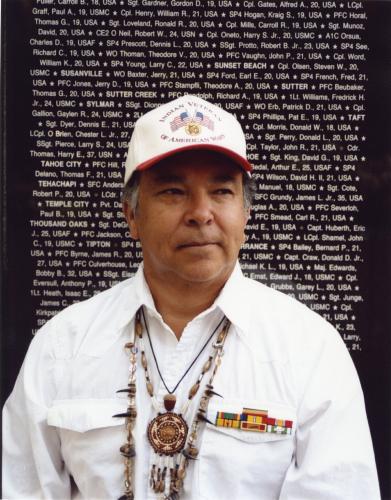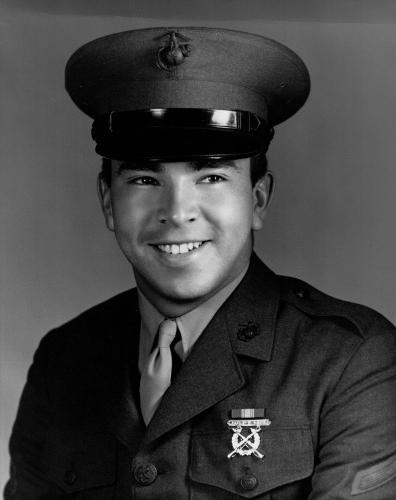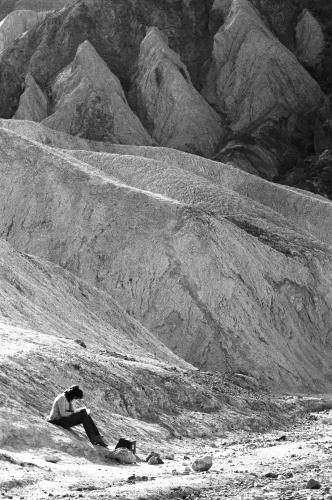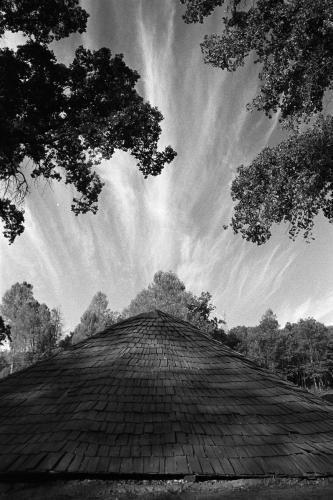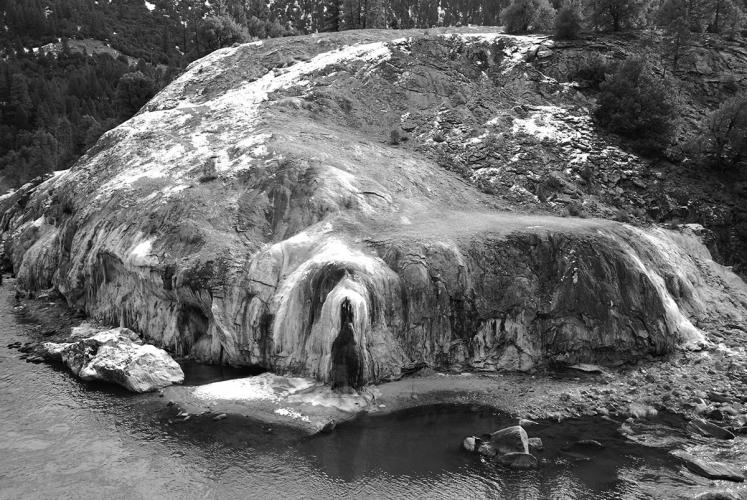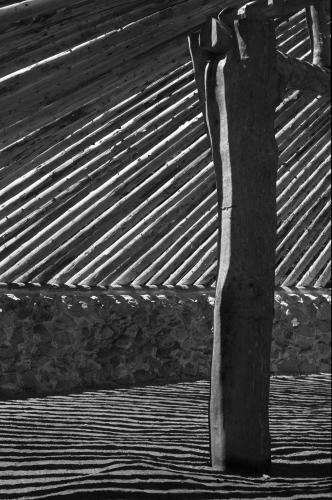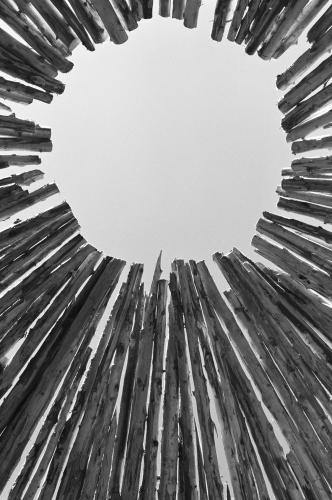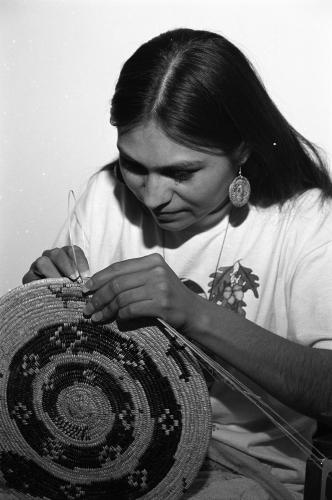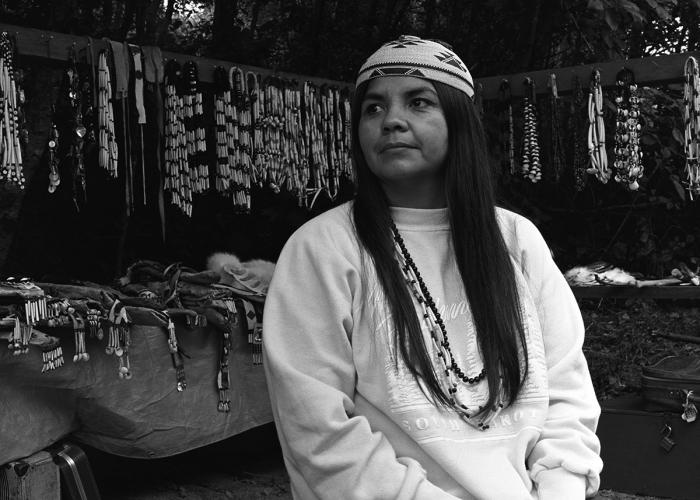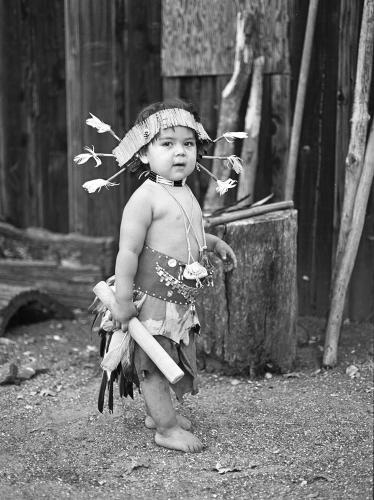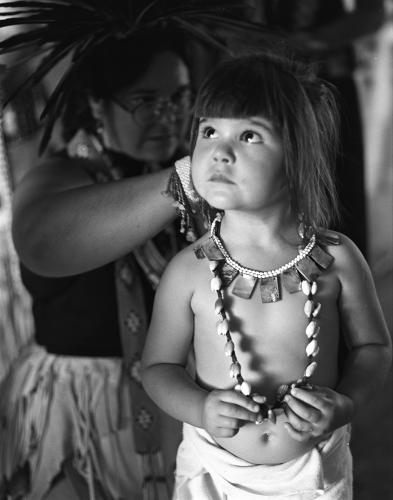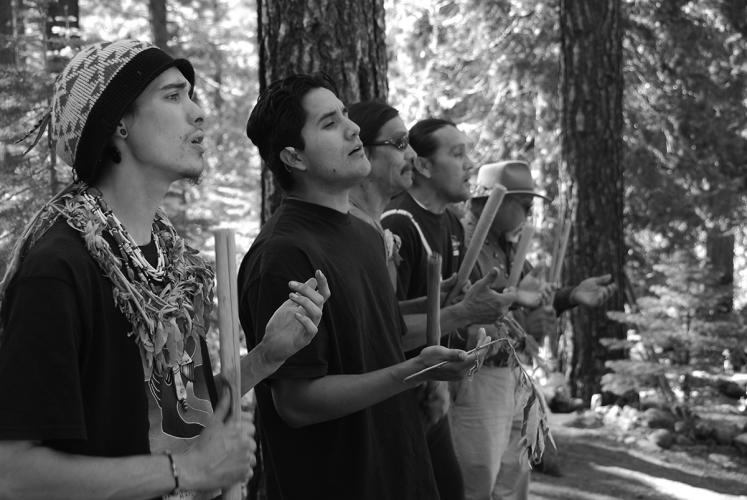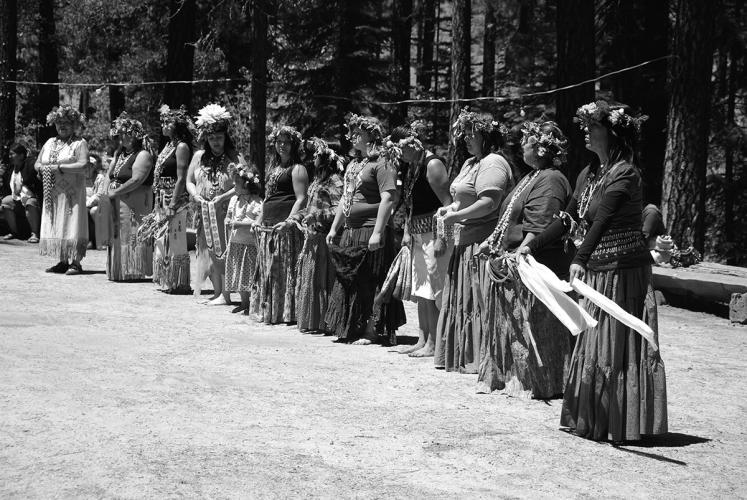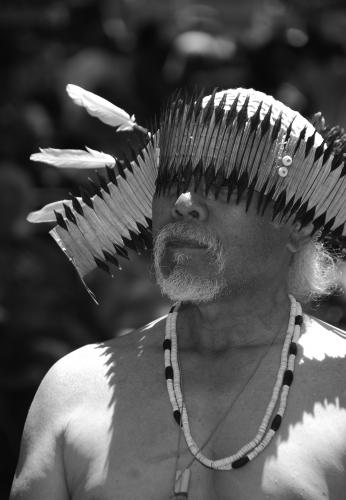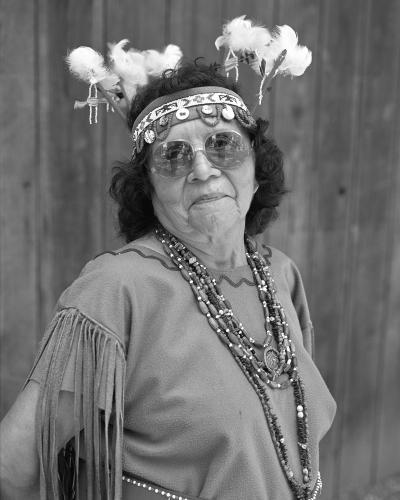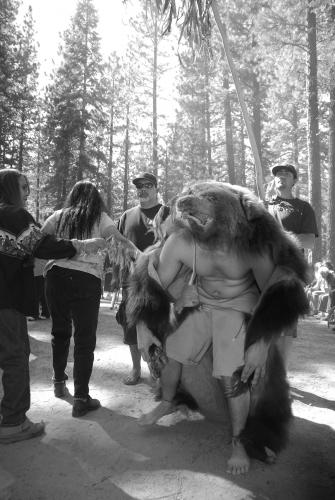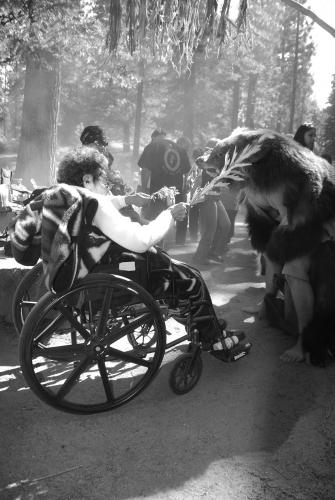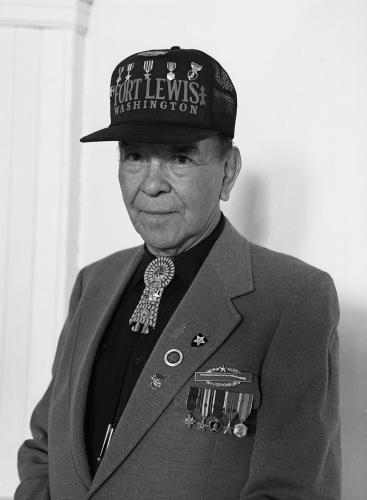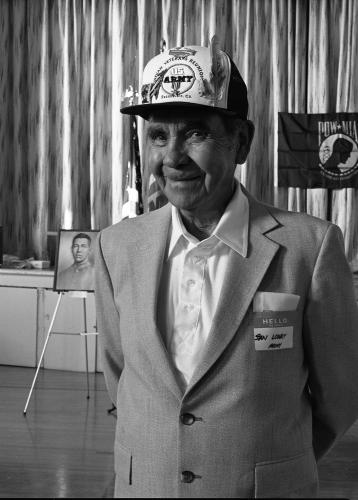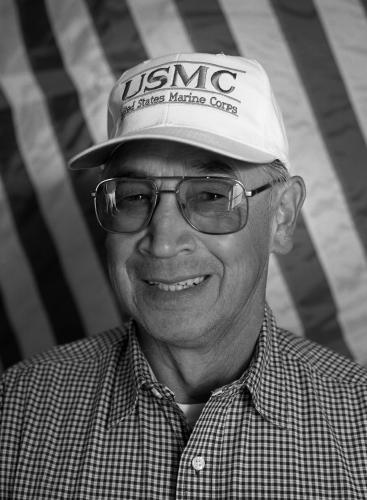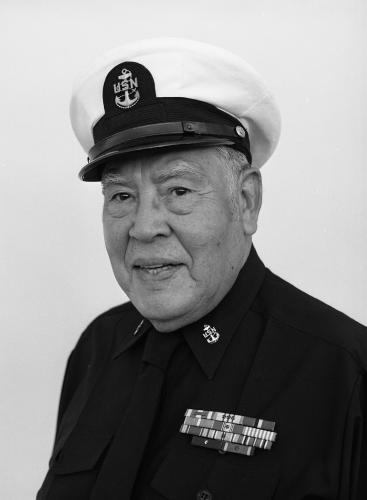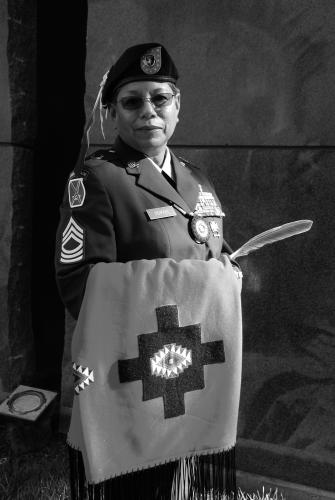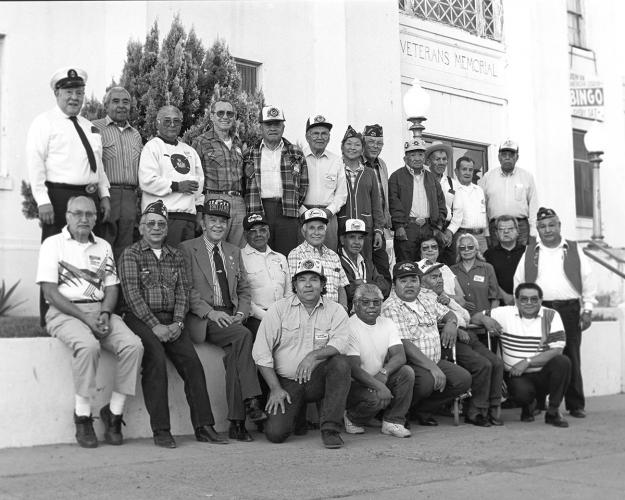For almost 40 years, Dugan Aguilar photographed California Native communities with intention and authenticity. As the son of parents who survived being forced to attend U.S. government boarding schools and a Vietnam veteran, Aguilar (Mountain Maidu/Pit River/Walker River Paiute) carried both the generational traumas of genocide and cultural loss as well as the personal injuries of war. To heal, Aguilar used the art of photography as his medicine. With the goal of celebrating the contemporary California Indian experience, he asserted that California Native peoples not only still exist but are thriving.
Born August 8, 1947, Robert Dugan Aguilar grew up in Susanville, California, homeland of the Mountain Maidu, Pit River, Washoe and Paiute peoples. He and his family attended Susanville Indian community gatherings, which included Native veterans’ reunions and the annual Bear Dance, a spring ceremony celebrating renewal. He was generous; when he learned to hunt, he frequently shared his elk or rabbit with elders. Aguilar was also an Eagle Scout and accomplished athlete. “He was just someone I really respected and wanted to be like,” recalled cousin Ike Lowry (Maidu/Pit River).
To Aguilar, military service seemed inevitable. Influencing his upbringing was an older generation of highly decorated Native World War II and Korean War veterans, most notably his father, Bob Aguilar (Walker River Paiute), and uncles Stanley and Leonard Lowry (bothMaidu/Pit River), the latter having founded the American Indian Veterans Association in Susanville. Not only was he surrounded by a culture that valued community and military service, but, according to his son, Dustin Aguilar, “he enlisted because he was going to be drafted anyway.” Dugan Aguilar joined the U.S. Marine Corps in 1968 and was stationed in Vietnam for 20 months as a forward observer, scanning for enemy targets ahead of his unit.
His tour in Vietnam was likely the most formative experience of his life. “One of the first jobs he had in Vietnam was loading body bags,” said his cousin, artist Judith Lowry (Maidu/Pit River). When he returned, he was a changed man. “I saw the shift in his personality,” she said. “He was more youthful and fun-loving as a kid.” For the rest of his life, he suffered from complications from post-traumatic stress disorder (PTSD) and Agent Orange, a toxic herbicide the U.S. government authorized the military to spray throughout Vietnam’s jungles to kill foliage. He rarely spoke of his wartime experiences.
Aguilar returned from Vietnam to a community that lacked the cultural knowledge of healing that he needed, so he sought his own path. He earned a bachelor’s degree in industrial technology and design from California State University, Fresno, in 1973. Though he harbored a longstanding interest, it was only after attending photography classes at the University of Nevada in Reno and one held by assistants of celebrated photographer Ansel Adams that he felt he had the skills to develop his craft.
Aguilar turned his artist’s eye toward his people. California encompasses the traditional homelands of more than 100 different tribes. Yet even within the state, its rich Indigenous cultural diversity has been seldom recognized. Seeing this disparity, Aguilar devoted his artistic life to honoring the tribes’ varied experiences. After examining his father’s archive, Dustin Aguilar said he realized that “he didn’t focus on the trauma side of Native world and culture. He didn’t want to show [Native peoples] as victims or heroes. Just what it is.”
During the late 1970s, Aguilar and his wife, Liz, moved to Elk Grove, California, so that he could work in the graphics department at the Sacramento Bee. Meanwhile, he eagerly learned more about his own and neighboring cultures. Initially, “he decided that he was going to photograph every tribe in the United States,” reflected Judith Lowry. “He realized California by itself was a life’s work.”
Aguilar’s images reflect his commitment to establishing trust with those he photographed. For many of the cultural events, he was the only photographer allowed to attend. Initially a portraitist, Aguilar photographed the Maidu Bear Dance, Yurok and Karuk ceremonies, and the annual Susanville Indian veterans’ reunions. He became the official photographer for the California Indian Basketweavers’ Association and News from Native California, a magazine devoted to California’s Native peoples.
Aguilar gave large, matted prints to those he photographed in an extension of traditional Indigenous systems of reciprocity. “He was out there bearing culture,” observed Judith Lowry. “You pick a piece of the culture you can carry.” For Aguilar, photography was the means to remind his community of their heritage and self-worth. Chag Lowry considers his cousin’s work as a gift. “There’s a fair amount of racism throughout California,” he said. “All these Native people were very brave to share their image. He was that facilitator for many Native families to share very cultural and very deeply held expressions and emotions.”
Family members speak of Dugan Aguilar’s humility and unobtrusiveness. “His camera, you didn’t really notice; he didn’t interfere with anything,” Ike Lowry recalled. “He was able to be accepted into positions of taking photos that were sensitive.” Aguilar’s respect for his people extended even to the words he used to refer to his craft, avoiding predatory terms like “taking” or “shooting” photographs.
Sandra Lowry (Yurok) introduced Aguilar to her people’s Yurok and Karuk Brush Dance ceremonies. “There was an elegance about him,” she recalled. “People looked at him as another Indian. It didn’t matter that he wasn’t our tribe. We want Indians to do this.”
Sandra Lowry suggests that the act of photography served as Aguilar’s ceremony of healing. “Dugan’s photography, even just being in black and white, is a balance,” she said. “There’s so much when you look at a color picture: Do I look at that piece of the ceremonial regalia? Do I look at the red of the woodpecker or the green of the mallard? . . . That’s the quiet background that I felt with Dugan.” Dustin Aguilar attributes his father’s serenity to counterbalancing the experience of war. “With PTSD, he didn’t want those explosive moments around him,” he said. “His nervous system felt calmer in moments when things are settled, like a breath.”
Aguilar’s photographs of his fellow Native veterans express camaraderie and mutual respect, but they also allow conversation about and healing from experiences many might prefer to forget. Independent curator and advocate Theresa Harlan (Kewa/Jemez/Laguna Pueblos), who originally met Aguilar through the American Indian Contemporary Arts gallery in San Francisco, said “There’s a need [for veterans] to recognize each other. . . . When you look at his veterans series, it’s really to recognize those who may not always feel comfortable being recognized.” In a contemporary variation on ceremony, the gatherings—and Aguilar’s documentation of them—restored veterans and their communities. “Sometimes the only way you can talk about it is when you have representation,” said Chag Lowry, “Dugan was healing himself, but his imagery heals people. When they see it, they can talk about it. That’s powerful, and that’s good medicine.”
Dugan Aguilar died on October 6, 2018. About 25,000 negatives, prints and transparencies that he captured from the 1980s to 2010s are now archived at the Oakland Museum of California (OMCA). Drew Johnson, OMCA’s curator of photography and visual culture, said the archives are vital to the interpretation of California’s history and cultures. “The Aguilar archive is the most important photographic acquisition by the museum in many years. This project is integrally tied to our work to engage California communities in the interpretation and presentation of their stories.”

